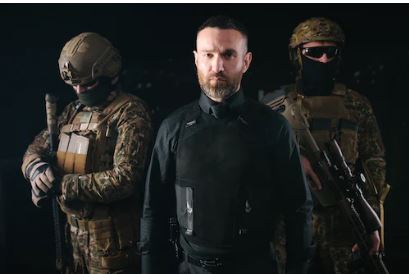Body Armor as Personal Protective Equipment
In today’s world, personal safety is a top priority. Whether it’s for law enforcement officers, military personnel, or civilians facing potentially dangerous situations, body armor has become a crucial form of personal protective equipment.
This article will delve into the significance of body armor in offering protection, its various types, and how it functions to safeguard individuals.
Contents
Understanding Body Armor: A Shield of Protection
In the modern landscape, where safety is a paramount concern, the concept of body armor has garnered immense significance. Acting as an indispensable shield against potential threats and dangers, body armor serves as a safeguard for individuals facing hazardous situations. This protective gear is meticulously designed to not only minimize the risk of injury but also to enhance the overall chances of survival.
The Role of Plates in Body Armor
Plates, an integral component of a body armor with plate, epitomize their significance in providing formidable protection. For situations requiring defense against more formidable threats, these plates, crafted from robust materials like ceramics, undertake a pivotal role. Inserted into specially designated pockets within the armor carrier, plates act as an energy-absorbing bulwark.
Benefits of Using Body Armor as Personal Protective Equipment
Embracing body armor as a form of personal protective equipment (PPE) offers an array of undeniable benefits, making it an essential asset for those navigating potentially perilous situations. This section delves into the advantages that arise from incorporating body armor into one’s safety arsenal.
Enhanced Safety and Security
At its core, the primary benefit of utilizing body armor is the enhanced safety it provides. Whether in law enforcement, military operations, or civilian life, body armor acts as a formidable barrier against a variety of threats. By deflecting or absorbing the impact of projectiles, body armor drastically diminishes the risk of life-threatening injuries. This added layer of security fosters confidence in individuals facing uncertainties, bolstering their ability to function effectively.
Mitigation of Injury Risk
In scenarios where danger is prevalent, the potential for injury is a constant concern. Body armor, especially when equipped with plates, actively mitigates this risk. By dispersing the force of impacts over a larger surface area, body armor minimizes the harm inflicted by bullets, shrapnel, or other hazardous elements. This mitigation is crucial not only for personal survival but also for maintaining the capacity to respond to threats promptly.
Versatility for Various Situations
One of the remarkable aspects of body armor is its adaptability to diverse situations. With different types of body armor available, individuals can select the appropriate level of protection based on the nature of the threat they are likely to encounter. From soft body armor for situations involving handguns to hard body armor suitable for rifle rounds, this versatility ensures that users can tailor their defense to match the specific circumstances they face.
Improved Confidence and Focus
When donning body armor, individuals experience a heightened sense of security, which, in turn, translates to improved focus and confidence. Whether it’s a police officer patrolling a high-crime area or a soldier deployed in a combat zone, the knowledge that they are equipped with reliable protection fosters a clearer mindset. This mental reassurance enables professionals to perform their duties with greater concentration, ultimately contributing to more effective decision-making.
Long-Term Investment in Safety
Investing in high-quality body armor is akin to making a long-term commitment to personal safety. While the initial cost might be a consideration, the durability and longevity of well-constructed body armor ensure that it remains a reliable asset over time.
This investment safeguards individuals not only in the immediate future but also throughout their career or period of use, reinforcing the notion that safety is a priority worth investing in.
Enhanced Training and Skill Development
The integration of body armor into training regimens serves as an additional benefit. Professionals who regularly wear body armor become accustomed to its weight and feel, which can contribute to improved agility and performance.
Moreover, incorporating body armor into training scenarios allows individuals to practice under realistic conditions, honing their skills in situations that mirror potential threats.
Promotion of Well-Being
The peace of mind that body armor provides contributes to the overall well-being of individuals who frequently encounter risky situations. Reduced stress and anxiety stemming from concerns about personal safety enable professionals to maintain better mental health. This positive impact on well-being extends to families and loved ones who also benefit from the knowledge that their dear ones are equipped with reliable protection.
Conclusion
In an era where personal safety stands as an unwavering priority, the emergence of body armor as an indispensable protective measure cannot be overstated. This vital equipment has transcended its initial military origins to become an essential component for law enforcement officers, military personnel, and civilians facing potentially perilous circumstances.




